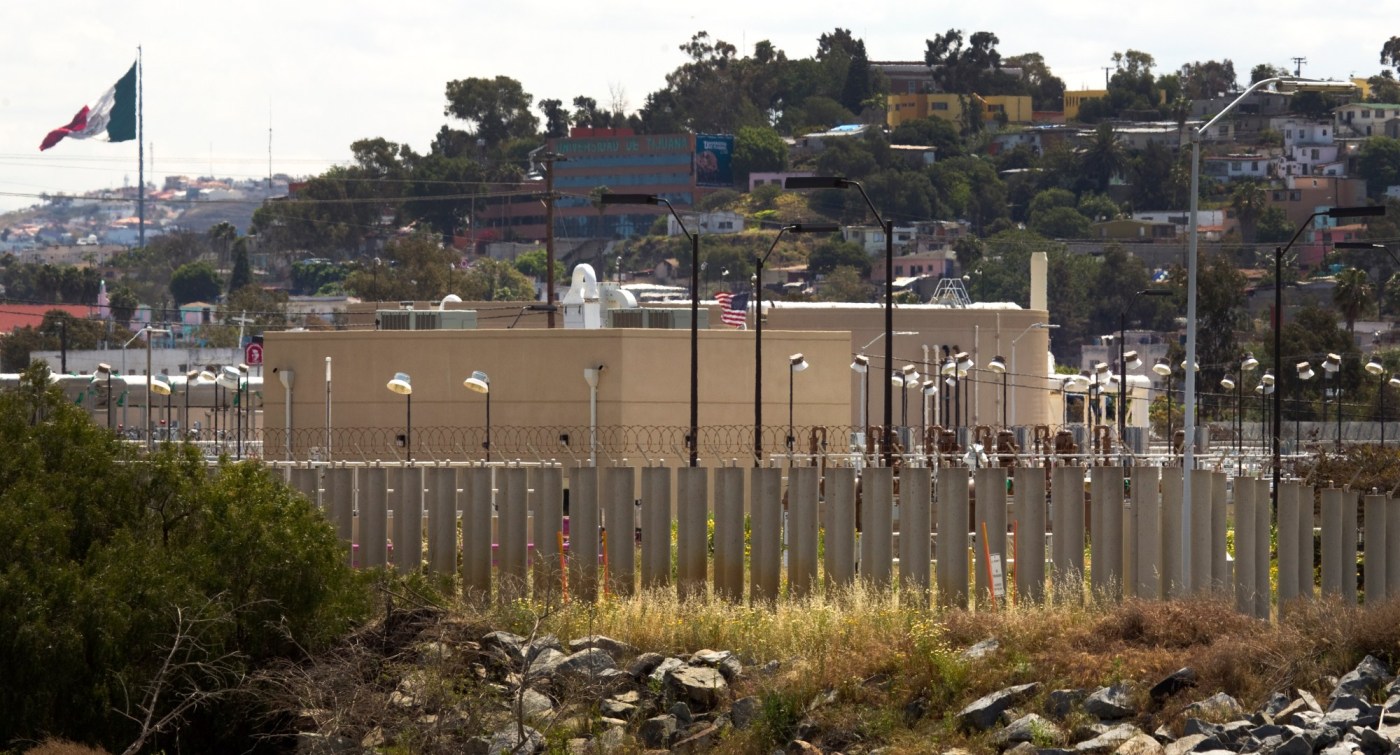Poinsettias, Southern California’s Christmas Gift

Poinsettia is up there with Santa, Rudolph, mistletoe, and holly as a symbol of the Christmas season. A.k.a. Euphorbia pulcherimma = (“the most beautiful Euphorbia”), poinsettia is our country’s economically most important potted plant. As many as 70 million are sold per year. That translates into tens of thousands sold in Riverside alone. And the reason for being so popular stems from the efforts of a Southern California family. How did this Mesoamerican native come to settle in SoCal and capture the hearts of Yuletide enthusiasts nationwide?
Before we get to that question, let’s go through a bit of a poinsettia primer and address three poinsettia misconceptions:
- First, don’t make the mistake of calling the plant “POINT-set-ta,” as I used to do. It is named after Joel Roberts Poinsett, the first United States Minister (ambassador) to the newly born country of Mexico, who introduced it to the United States. The proper pronunciation is “poin-SET-tee-a.” That is, there’s no “point” to the name.
- Second, the poinsettia’s reputation for being fatally poisonous is overstated. Yes, it is a member of the Euphorbiaceae (spurge) family, which is known for some very nasty plants, such as Castor Bean, which is the source of ricin. But Euphorbiaceae is also known for cassava (a.k.a. “manioc” or “tapioca”), an important starchy staple for millions of folks in the tropics (also, cassava is the source of the stuff from which boba balls are made!). Make no mistake: poinsettias deserve respect. Handle a plant too roughly, and a milky sap (latex) may ooze from stems and leaves, which can cause skin and eye irritation. A consumed leaf can be inconsequential or can lead to nausea and intestinal distress. Thus, poinsettia flowers, leaves, stems, and roots should NOT be consumed by humans or pets. But their parts have such a bitter taste that you can expect an unwary snacker to often spit them out. Despite tens of thousands of reports of poinsettia contact and consumption, fatalities are unknown (Krenzelok et al. 1996).
- Third, those leafy bright red parts are not the petals of poinsettia flowers. The tiny yellow, red, and green flowers of poinsettia are arranged in small clusters. In contrast to most flowering plants, individual flowers are unisexual, containing male parts or female parts but not both. The flower clusters are surrounded by those larger, bright red leaf-like things that are, in fact, leaves. Botanists give modified leaves associated with flowers a special name, “bracts.” The normal leaves are dark green. Under the right conditions, the plants can grow to be shrubs or even small trees as tall as 13 feet.
Wild poinsettias grow along the Pacific coast cliffs of southern Mexico and northern Guatemala. Inland wild plants are almost unknown, except for populations in the Mexican states of Guerrero and Oaxaca. Genetic analysis has shown that a Guerrero population is closely associated with the cultivated type, suggesting that the initial domestication of the plant probably occurred in that region.
Regardless of the specifics of the evolution of the poinsettia, the 16th-century Spanish conquerors of Mexico found the Aztecs used the plant as an ornamental for a variety of ceremonies; bracts were also used for a dye, and the sap was used for some medicinal purposes. In Nahuatl, the Aztec language, poinsettia’s original name was “cuetlaxochitl”. However, the general policy of the Spanish conquerors was to demonize and ban the use of the native domesticates of the New World (like Amaranth). Indigenous useful plants, such as maize (a.k.a. “corn”), were embraced. In the case of the poinsettia, the Spanish co-opted its use for Christmas celebrations, renaming it flor de Noche Buena, “Christmas Eve flower.” Certainly, a creative case of cultural appropriation.
The precise details of how poinsettia made its way to the United States remain murky. It is clear that diplomat and amateur botanist Joel Poinsett played some role in introducing the plant, but the hows, whens, and wheres remain controversial. One thing is clear: the plant made its way to Philadelphia, where it made its international debut at the 1829 Pennsylvania Horticultural Society’s flower show. First, it was called by various names in the United States, such as “Mexican flame flower” and “poinsettia,” and eventually stuck.
By the late 1800s, poinsettia production had spread to several states and even Europe. However, the current boom in poinsettia production can be traced back to the efforts of the German immigrant family, the Eckes. Albert Ecke and his family stopped in California in 1900 on their way to start a health spa in Fiji. They liked what they saw and settled in the Los Angeles area, growing an array of species for the cut flower industry. By 1909, they had narrowed their focus to poinsettias. After Albert Ecke passed away, his son Paul moved the business to Encinitas.
During the first half of the 20th century, poinsettia was a popular but wimpy plant. A buyer could expect green leaf drops and scarlet bracts to persist for no more than 10 days. As one floriculturist of the time observed, “Perhaps no other plant or flower that we handle during the Christmas week is [so] short-lived, wilts quicker, or is more disappointing to those that receive it; yet when the next Christmas comes around, there comes again the same demands for poinsettias and the disappointments of a year ago are forgotten” (Bahr 1937 as quoted by Taylor et al. 2011).
The Eckes embraced innovations in poinsettia production. One example is that they shaded their plants to fine-tune flowering. Poinsettias are known as short-day plants; that is, they require several weeks of long nights to stimulate flowering. The Eckes put an adjustable black cloth over their greenhouses to create an 11.75-hour “night” to induce flowering and deliver plants with the Goldilocks amount of available flowering when they hit the stores.
Another example is the proliferation of new cultivars by the Eckes and other growers. Compared to the one-size-fits-all original major cultivar “Oak leaf,” the newer cultivars offered a variety of advantages, including sturdiness, longerflowering, earlier flowering, dwarfism, bigger bracts, darker green foliage, etc. A rainbow of colors has evolved. Poinsettias now come with bracts of white, orange, yellow, pink, purple, blue, and various shades of red. Furthermore, some cultivars feature mottled or otherwise bicolored bracts; Ecke’s “Ice Punch” variety has rosy bracts with a white splash in the middle of each.
Paul Ecke, Jr. took over the company in 1963 and aggressively expanded it. In 1992, Paul Ecke III took the reins of what had become known as “Ecke Ranch” and moved the propagation part of the company to Guatemala so that plants could be established there and then “finished” in California for precise timing in delivery to national and international markets. At its height, Ecke Ranch was supplying 70% of the U.S. market and about half of the worldwide poinsettia consumption.
The trend for the agricultural industry over the past few decades has been a series of acquisitions and mergers. For example, Bayer CropScience ate the ag biotech giant Monsanto. So, too, for the Ecke Ranch. The family sold the company in 2013 to the Dutch Agbio Group, which, in turn, merged with the German Dümmen Group, a company that had experience with the European poinsettia market. Nonetheless, the four generations of Eckes have left their legacy in southern California’s poinsettia industry.
Buying and caring for your poinsettia
What to look for when buying your California-grown poinsettia? Look for a robust plant with happy foliage and good color. Avoid plants with wilting or droopy leaves or bracts. Check out the real flowers and make sure that they don’t show any pollen because the bracts will drop soon after pollen production. Once you have it at home, put the plant where it will have plenty of light by day and be cool, that is 60’s (not cold) at night. Remember, this is a tropical plant; it will not tolerate several hours under 50 degrees F. Water when the soil is dry. With the modern cultural techniques of the producers and the sturdiness of contemporary cultivars, you should not be disappointed.
If you are ambitious, it is possible to keep this perennial alive through an entire year to a subsequent Christmas; see https://ucanr.edu/sites/urbanhort/files/80155.pdf. Getting a second Christmas flowering is challenging. You will need to simulate the Mexican dry season, mimic herbivory to keep the plant compact and create a long-night regime for 10 weeks or so to stimulate flowering. Good luck!
And happy holidays!
Resources used to create this article
- Krenzelok, E.P. et al. 1996. Poinsettia exposures have good outcomes … Just as we thought. American Journal of Emergency Medicine 14:671-674.
- Paul Ecke Ranch – Wikipedia
- Poinsettia care. https://ucanr.edu/sites/urbanhort/files/80155.pdf
- Poinsettia – La Flor de Nochebuena – The Real Dirt Blog – ANR Blogs
- Poinsettia – Wikipedia
- Taylor, J. M. et al. 2011. The Poinsettia: History and transformation. Chronica Horticulturae 51(3):23-28. chronica 3 2011.indd




















